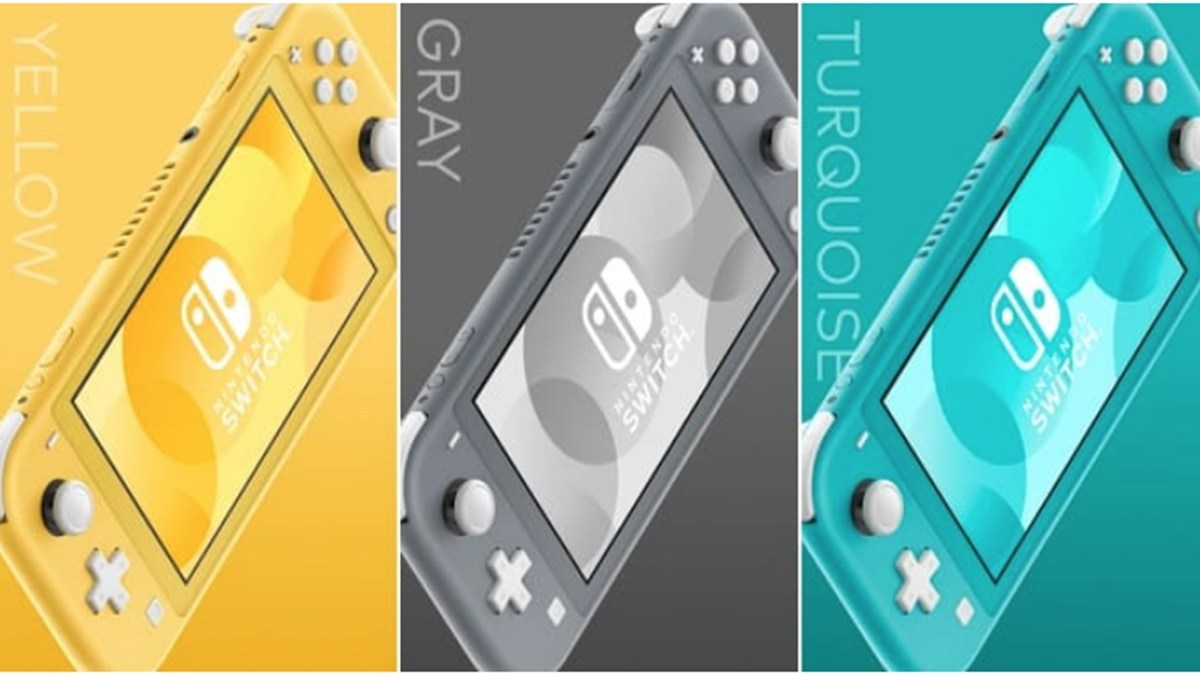Trivia games, as we all know, can be a ton of fun if you’re playing with a bunch of people who all have roughly the same set of knowledge, and a horrible slog if a few people are whizzes in the subject matter and everyone else isn’t. But is there a way to solve that? The folks at Funko Games may have shown that the answer is yes.
What Is ESPN Trivia Night?
ESPN Trivia Night is a game for 2-10 players, ages 10 and up, and takes about 50 minutes to play. It’s currently available on Amazon and from your friendly local game store.
Note: As an Amazon affiliate, I earn from qualifying purchases.
ESPN Trivia Night was designed and published by Funko Games.
ESPN Trivia Night Components

Inside the box, you’ll find:
- 140 double-sided trivia cards containing 1000 questions
- 7 card dividers
- One card box
- 42 draft cards
- Red and black replay tokens
- Two team scoring trackers
- 12 tracker clips
- One first player token
- One instant replay board
- One plastic football goal post
- One plastic baseball strike zone
- One plastic ice hockey net
- One plastic basketball hoop
- One felt launchpad
- Three each of plastic football, basketball, baseball, and hockey puck tokens
- One distance ruler
- Two plastic shooters
The components are all of the high quality you would expect from a finished game from Funko.
The trivia questions are divided into seven categories: All Sports, Baseball, Basketball, Football, Ice Hockey, Logos & Mascots, and Seen on Screen.

The trivia cards for the All Sports, Baseball, Basketball, Football, and Ice Hockey categories have three questions on each side, in three difficulty levels: one-point “beginner” questions, two-point “amateur” questions, and three-point “pro” questions. Every question is multiple-choice, with the correct answer indicated in red. This allows them to print questions on both sides, unlike other trivia games that have the answers on the back.
The Logos & Mascots and Seen on Screen cards are a bit different, with five questions on each side, one for each of the other categories. They are, though, still multiple-choice, and still have a different set of questions on the back.

The cards all fit into a single box, and the game includes heavy cardboard dividers so that you know what category you’re pulling from. This box is basically my only major issue with the game. The cards are harder to pull out than they should be, and both times we’ve played we’ve had to really look at the box each time to figure out if we were pulling cards from the front or the back. Given the number of cards, I can understand why Funko chose to put them together into the box, but I wish it was even 5% wider. Still, this issue isn’t enough to ruin an otherwise great game.

An interesting mechanic in the game is the draft, which is both thematic and gives the game a bit of deeper strategy you won’t normally find in a trivia game. The draft deck is made up of a series of cards, with each card displaying one of the seven categories. The Logos & Mascots and Seen on Screen cards are all identical, with each of those questions being worth one point, while the draft cards for the other categories have either one, two, or three points on them. How these are used in the game is described below.

The game is played in two teams, red and black. Each team has a set of round cardboard tokens for the replay board. These are all very simple, with the ESPN logo on both sides of an appropriately colored disc. The replay board is a large instant replay board, made of the same heavy cardboard as the score trackers, and also like them a pentagon, but it’s about 50% bigger.
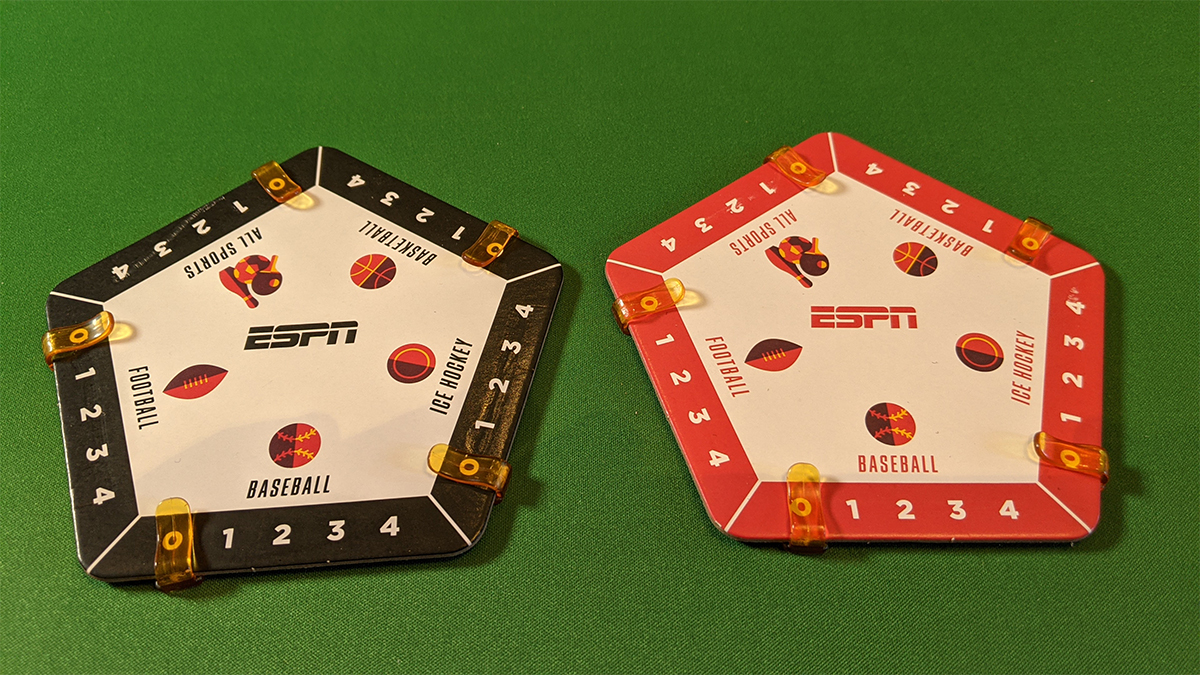
Each team also gets a heavy cardboard scoring tracker, which is a pentagon with the four main sports in the game and All Sports each getting a side. Players attach small plastic clips to the edge and move those to track their scores. A subtle but important design choice is using these clips rather than tokens, which given the dexterity part of the game could easily get knocked off. The clips stay securely in place, minimizing the chances of losing track of the scores.

And then there are the dexterity components. The game revolves around four major sports and includes a large plastic piece for each. For football, there’s a set of goalposts, which are a little over 6 inches tall. There’s a basketball hoop that is ever-so-slightly smaller (although I should mention the hoop is actually two pieces, as the rim is removable for easier storage). Baseball is represented by a strike zone, which is a home plate with a large box over it (and as an umpire, I have to say that if real home plates had this, my job would be a lot easier), and finally, a hockey net.
All of these are made from red Cyrillic, although the “net” part of the hockey net is scored clear plastic. More importantly, they are all carefully balanced so that they don’t fall over when you’re using them in the game.
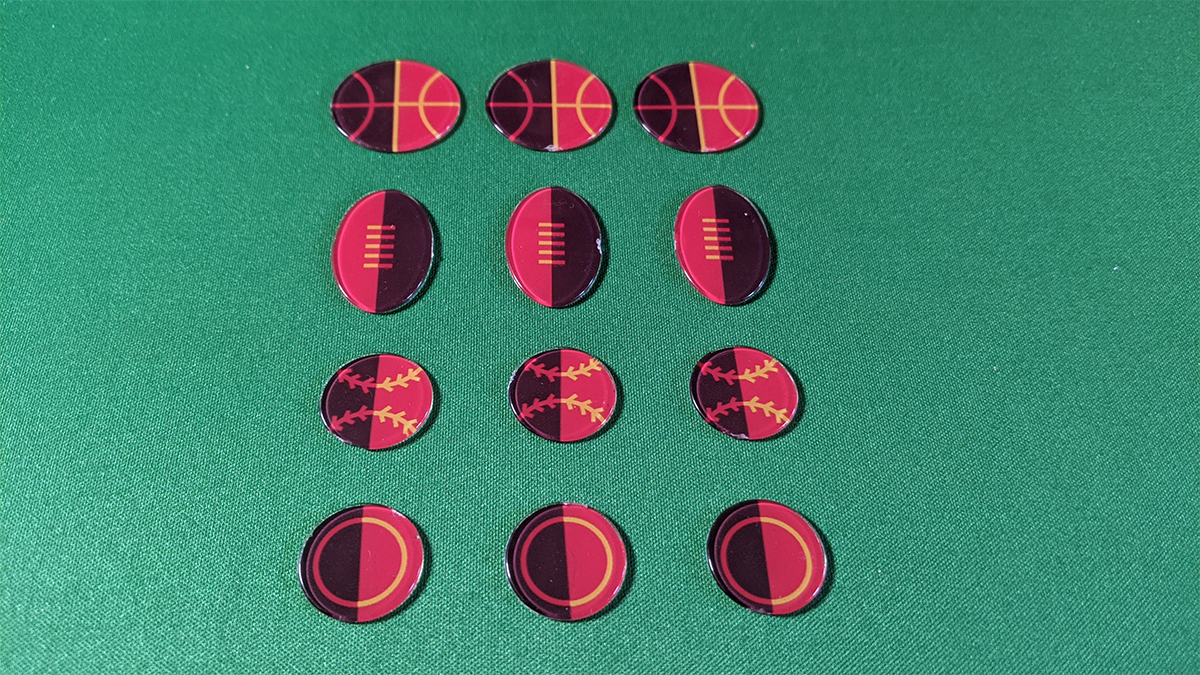
Field goals, baskets, goals, and strikes are all accomplished by shooting small plastic tokens through the appropriate obstacle. While only one of each type of token was really needed, the game includes three of each. I don’t know if this is because they think these will get lost or damaged, but it’s nice to have them.

Each sport has a different minimum distance, provided by the cardboard distance ruler.
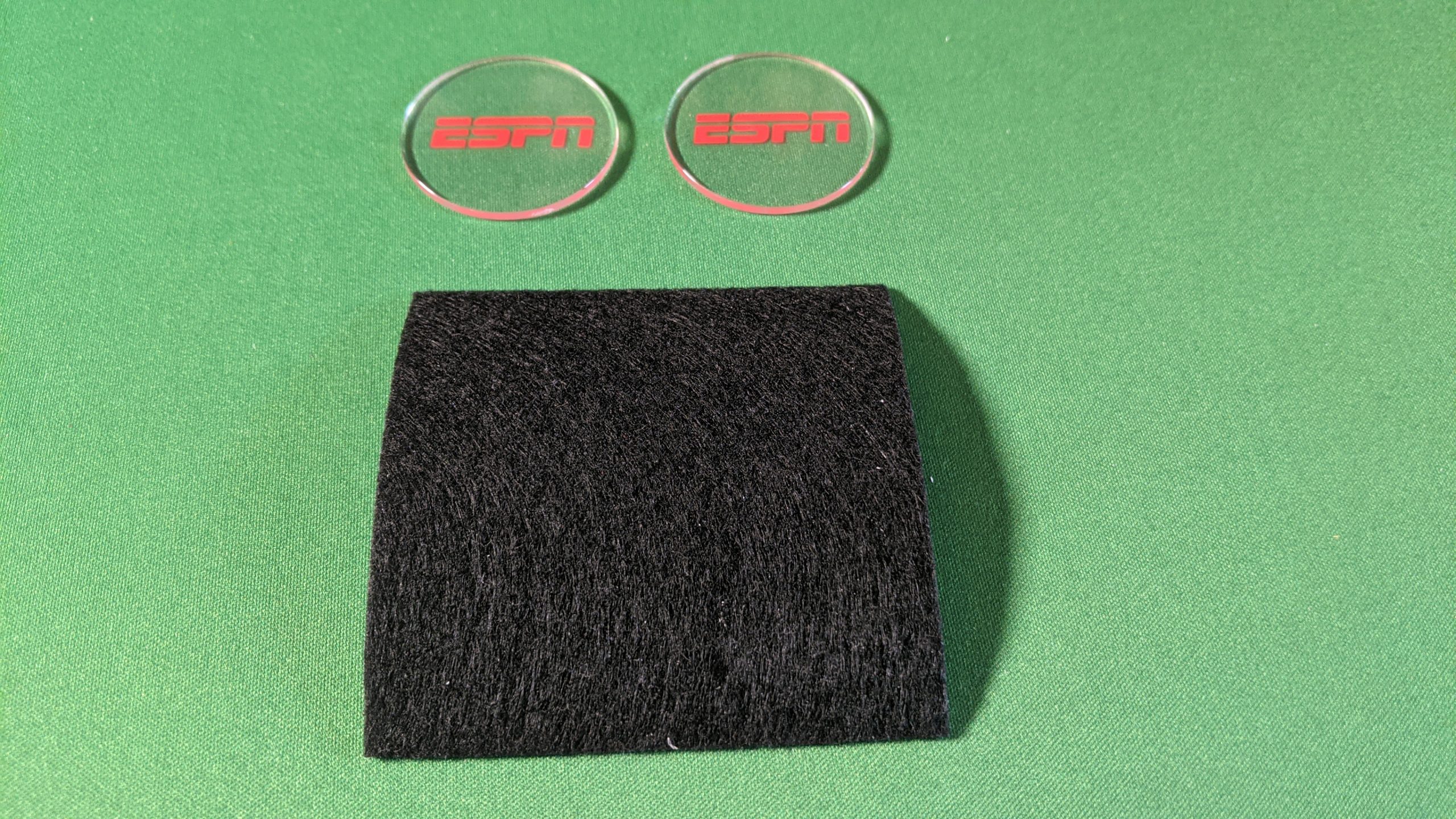
All of the shots are done by somehow flicking the appropriate token using the Shooter, which is a slightly larger plastic disc. Shots are taken from the felt shooting pad, which is exactly what it says.
How to Play ESPN Trivia Night
The Goal
The goal of the game is to be the first team to score four points in each of the five sports.
Setup

The setup of the game is very fast. Divide your group into two roughly equal teams. The rules say that the number of players on each team should be roughly equal, which might matter in the end game, but it’s probably more important than the relative level of sports knowledge be roughly equal between them. Each team takes their score tracker and puts five clips on it on the zero spots on each sport. They also take their set of replay tokens.
Someone shuffles the draft card deck and puts it face down on the table.
The Instant Replay board is placed somewhere on the table, along with the replay components. Those aren’t needed right away, but make sure you have enough space for them.
According to the rules, the team with the youngest player goes first and gets the first player token.
Gameplay
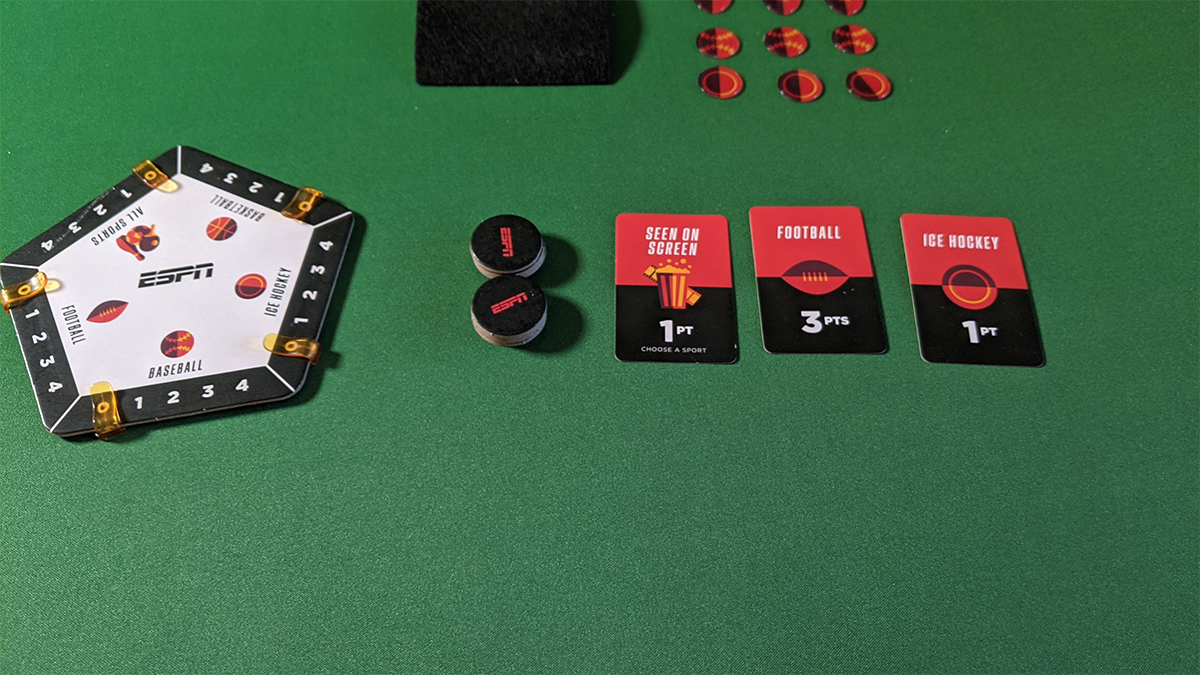
To begin the game, someone turns over the top six draft cards and forms them in a line. Then, the team with the first player token decides on a draft card they want and takes it. The other team does the same, and so forth, until all six have been drafted.
This is the first interesting twist to the normal trivia game mechanic. In most other games, which category you’re going to get asked is mostly random, based on the roll of the dice or movement or something else. Here, though, you have some agency in what you pick. Have someone on your team who is great at football? Go ahead and take that three-point football card. Someone else really into (sports) movies? Grab that one before the other team does.
Also, as with all games that involve draft mechanics, later in the game you have the ability to “hate draft.” I may not know anything at all about ice hockey (and really, I don’t), but if the other team is going to possibly win by getting that two-point hockey question, then my team probably needs to grab it, even if we have little chance of answering the question.
Once all of the draft cards have been selected, the first team chooses one of their cards. They discard it, and the other team then selects a card from the category on the draft card and reads the appropriate question. In other words, if the red team discarded their three-point football draft card, the black team would read one of the three-point football questions from the card they drew from the football category in the deck. They read the multiple-choice answers and the other team guesses.
The rules are silent on whether or not the team asking the question can select which of the two questions on the card (remember, each card is double-sided, with questions front and back) they can ask. We house-ruled that they can look at both and pick the one they think will be harder, but that’s something you’ll need to work out when you play.
If the team answers the question correctly, they score the appropriate number of points and move their score tracker accordingly. If they get it wrong, though, all is not lost: they take one of their replay tokens and place it in the matching sport on the Instant Replay board. (We’ll come back to that in a moment.)
Then, whether they got the answer right or wrong, the other team picks one of their draft cards, discards it, and answers the question posed by the other team.
The subjects of the cards in the four named sports is obvious. The All Sports category is a set of questions about every sport other than football, baseball, basketball, and ice hockey.
As mentioned above, the cards for the Logos & Mascots and Seen on Screen categories are different. All of these cards are always worth one point. When a team discards a draft card from either of these, they select either football, baseball, basketball, ice hockey, or all sports, and the other team then reads the question matching that selection. If the team answers correctly, they score one point in the sport they selected; if they get it wrong, they place a replay token in the selected sport on the Instant Replay board.
Once each team has answered the three questions matching the cards they drafted, the game moves into the third, and most fun, phase: Instant Replay.
First, each team takes one replay token and places it on the Instant Replay board in a sport of their choosing. Thus, even if a team answers all of their questions correctly, they’ll still get to play in this phase.

The first team then removes one of their tokens and sets up the equipment needed for that sport: the goalposts, basket, strike zone, or net. They place the ruler with the yellow rectangle next to the base of the equipment, and then the felt launching pad next to the ruler on the table at the indicated distance: 6 inches for basketball, 8 for baseball, 10 for hockey, and 12 for football. The rules also say to set the box lid behind the equipment as a backstop. It makes for a nice visual, but honestly, it did little to stop the tokens from flying off the table.
Before beginning, the teams decide how many practice shots are allowed. There’s nothing saying that this can’t change from one round to the next. We also mutually agreed that you could decide to skip any of your practice shots by simply declaring that your next shot counted.
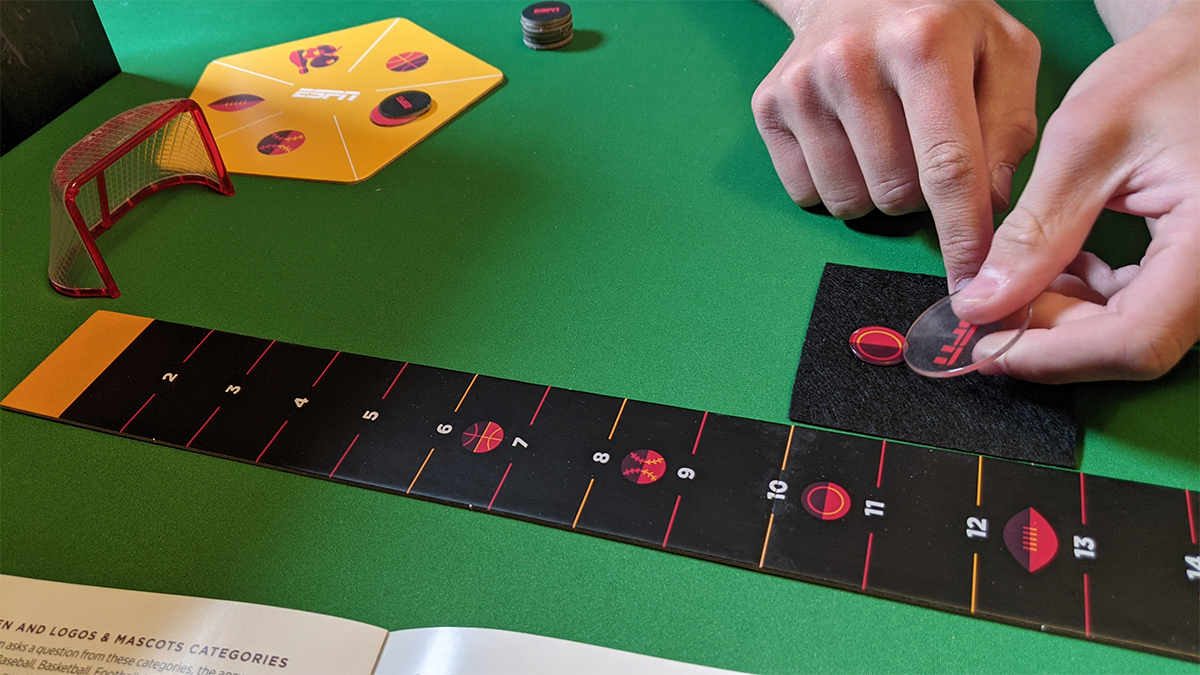
For each sport, you set the ball or puck on the launch pad, and then use the shooter to flick the token. If it goes through the basket or the strike zone, your team gets a point. If it goes through the goalposts, it’s a point, and like in real football, the goalposts can be imagined to go up forever, so a shot that goes very high but is still between them counts. For hockey, the puck has to go into the net; it’s still a point if it ricochets back out, and if it just barely makes it to the net but any part is inside, it counts.
Each team decides who will take each shot for the team. It’s OK for one person to take all of the shots, although it’s probably more fun to let everyone try.
Any team with a replay token in the All Sports section can choose which of the challenges they want to try.
Once all of the replay tokens have been used, play resets with another draft phase, followed by another trivia phase, followed by more instant replay.
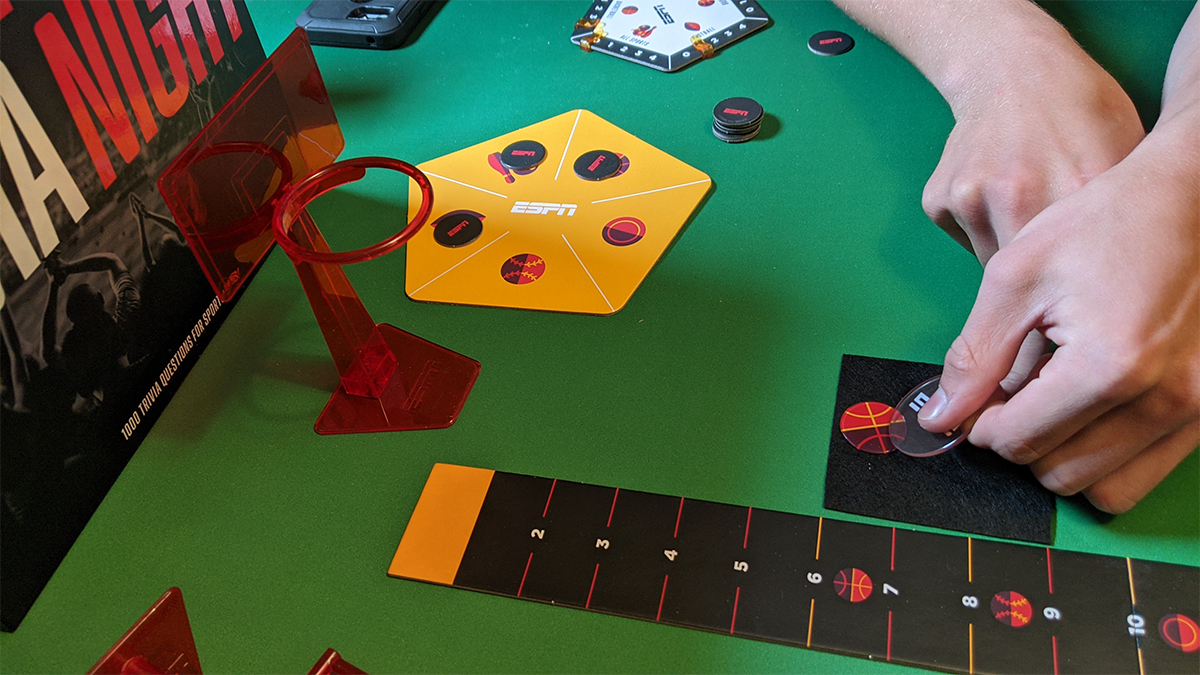
The only difference in subsequent rounds from the first is it’s possible, and at a point certain, that a team will be “maxed” out in a category, having scored four points already. Once this happens, they can (or may have to) still draft cards in that category, but when they do, then immediately discard the draft card and place a replay token in the category of their choice (one that they have not yet scored four points in) on the Instant Replay board.
This adds an additional level of strategy to later rounds. Your team might intentionally draft a card in which they’ve already maxed out, feeling you might be better at, say, shooting baskets than answering questions. It’s also where the “hate draft” element really comes into play. Your team might grab that three-point football card early in the draft, even though you already have four football points because you want to prevent the other team from getting it and scoring those points instead.
Game End
The game ends when one team scores four points in each of the five sports at the end of a round. It also ends if the draft deck runs out. (There are 42 draft cards, so no game can go more than 7 rounds.)
However, you do play out the entire round, including the Instant Replay, even after a team scores the required points. This means that the other team has a fairly decent chance of maxing out their points as well.
If (when) this happens, the game goes to Sudden Death. This also happens when the draft deck runs out.
If both teams have four points in all categories, then whatever team happens to have the first player token chooses one of the four Instant Replay games. If neither team has all of the points and the draft deck ran out, then whichever team has more points picks; if they’re tied, it goes back again to the first player token.
In either case, each team gets five shots to score as much as they can. Unlike in normal play, however, in this round, each shot has to be taken by a different member of the team. The team that scores the most wins; if they’re still tied, it’s a draw.

ESPN Trivia Night is GeekDad Approved!
Why You Should Play ESPN Trivia Night
As I said at the outset, every trivia game that doesn’t focus on general knowledge has a built-in problem where they just aren’t fun to play unless everyone in the group has the same level of knowledge in the given genre as everyone else. This is why the various movie trivia games I own sit unplayed on my shelf.
Sports trivia presents an even greater challenge. Even though I have now stopped supporting both the NFL and the NCAA, I grew up as a football fan, and until just a year ago spent basically every Sunday in the fall, along with most Mondays and a lot of Saturdays, watching the sport. And while I came to baseball much later, I’m now an even bigger fan of that sport. But I don’t enjoy basketball at all and have never watched so much as a minute of ice hockey. So in a normal environment, I’d be a good teammate to have in a trivia game about football and baseball, and absolutely useless in those other sports. Unless I was lucky enough to partner up with someone who filled those gaps, we would run into the classic trivia game problem whereby we get stuck on certain categories, and very quickly the game gets less fun.
But the designers at Funko have found a solution to that problem by eliminating the board, adding the drafting mechanism and the dexterity games. Most other trivia games require that you move your pawn along a board, and answer a question in the category on that space, and that’s what leads people to get stuck, and frustrated, by a category they’re weak in. With no board to move along, this game simply gets rid of that problem altogether.
Thanks to the draft, you can choose to take high-value, tough questions in your strong categories and lower-value, easier questions in your weaker categories. And while I don’t watch hockey, I do like hockey movies, and the Logos & Mascots and Seen on Screen categories give folks like me a better fighting chance with those sports as well.
It’s the dexterity games, though, that really provide the equalizer. Even if the total extent of your hockey knowledge is “Wayne Gretzky,” you can still get those required four points in the category by figuring out how to shoot goals. This means that it is highly unlikely that a team will be unable to score points, even in categories they know next to nothing about.
Everyone who watches sports at any level knows that the best games are the tight contests that come down to that last-second field goal or a bases-loaded, bottom-of-the-ninth strikeout, or a 3-pointer at the buzzer. And in each game we’ve played of ESPN Trivia Night, we’ve had exactly that kind of ending. The first time, my wife and I played on a team against my sports-obsessed son, and even though his sports knowledge dramatically exceeds ours, the game came down to the sudden death matchup, with him winning by virtue of a missed field goal by us. The next time was at a game night, where we took the two of my friends who know the most about sports, put them on separate teams, and then I joined one friend, while the other two people joined the other. And once again, the game ended in sudden death, and once again, a missed field goal by the other team allowed us to shoot one for the win. (There can be little doubt that of the four dexterity games, the field goal is the easiest.)
Two games is hardly a broad data set, but that both times I’ve played the game, with the only common player being myself, have ended with sudden death says to me that the game really has been designed with that ending in mind. But whether by design or by chance, that’s the way a sports game should end, and clearly, this game’s designers knew that.
Because it manages to be both a very fun trivia game, but also one that really has solved the problems with trivia games, I’m making ESPN Trivia Night my first GeekDad Approved game of 2021. I have no doubt it will continue to make it to the table as I begin to have game nights again, and whether you’re a fan of sports or just want a unique take on trivia games, I’d recommend picking up a copy.
Click here to see all our tabletop game reviews.
![]() To subscribe to GeekDad’s tabletop gaming coverage, please copy this link and add it to your RSS reader.
To subscribe to GeekDad’s tabletop gaming coverage, please copy this link and add it to your RSS reader.
Disclosure: GeekDad received a copy of this game for review purposes.



